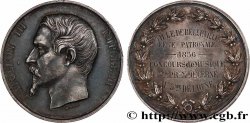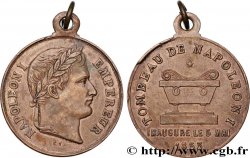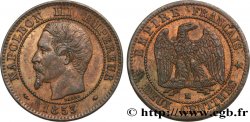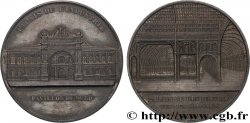E-auction 292-212802 - fme_412082 - SECOND EMPIRE Médaille de l’exposition de Dijon
得先注册又得到批准才可以报价。为了报价注册. 客户应该得到公司允许,那种过程需要 48 个小时。别等出售结束那一天才登记。您报价的话等于您赞成买那物品,而且按« 保价 » 证明您接受 cgb.fr 因特网拍卖使用法.
报价时只可以出全数值欧元总额。物品描述也说明销售结束时间,结束后出价都不会生效。 报价命令转达有时变动,等到最后秒钟增加否决的可能会。想多了解的话请注意 因特网拍卖常问
购货人不付费
购货人不付费
| 估算 : | 150 € |
| 价格 : | 35 € |
| 最高出价 : | 35 € |
| 拍卖结束日期 : | 19 November 2018 18:46:30 |
| 竞拍人 : | 9 竞拍人 |
种类 Médaille de l’exposition de Dijon
日期: 1858
铸币厂名称/城市 21 - Dijon
材质 copper
直径 56,5 mm
模子方针 12 h.
硬币制模工 CHABAUD Louis-Félix (1824-1902)
重量 98 g.
侧面 lisse + main CUIVRE
关于品相的说明
Médaille avec un superbe avers et quelques traces de manipulation au revers. Très agréable patine brune
正面
正面的文字 NAPOLÉON III EMPEREUR.
正面的说明书 Tête nue de Napoléon III à gauche.
背面
背面的文字 INDUSTRIE BEAU-ARTS AGRICULTURE * 1858 * // EXPOSITION / DE DIJON / MÉDAILLE DE 3E CLASSE / À / BOUTARDS & LASSALLE.
背面的说明书 Légende circulaire puis en 5 lignes horizontales.
评论
Médaille attribuée à boutards & lassalle.
Louis-Félix Chabaud, né le 14 mars 1824 à Venelles (Bouches-du-Rhône), où il est mort le 25 avril 1902, est un sculpteur et médailleur français. Fils d’agriculteur, Louis-Félix Chabaud fréquente l’école communale de Venelles jusqu’en 1836 et entre en apprentissage chez un boulanger, puis chez un marbrier aixois, M. Raimond. Il commence ses études à l’école des beaux-arts d’Aix-en-Provence avec Joseph Marius Ramus et les termine à l'École des beaux-arts de Paris sous la direction de James Pradier. Le 9 septembre 1848 il remporte le 1er grand prix de Rome en gravure de médailles et pierres fines pour son Mercure formant le caducée. Il séjourne à Rome pendant quatre ans, pensionnaire de l’État à la villa Médicis.
De retour à Paris, il expose au Salon de 1853 et obtient le 3e prix pour L’Agriculture (bronze) et Cérès embrassant Triptolème. En 1855 il est également primé pour une série de médailles : Agriculture, Napoléon III et une tête de femme. En 1857, il est à nouveau primé pour une sculpture en plâtre représentant La Chasse, acquise par l’État français. En 1859, douze camées en pierres fines lui valent le prix de la gravure et il reçoit, en 1863, une 3e médaille pour une statue de L’Agriculture et un bas-relief intitulé L'Abolition de l’esclavage.
Réputé comme sculpteur ornemaniste, il participe au chantier de décoration du Palais Garnier à Paris.
L’Exposition internationale de 1858 s'est déroulée dans la ville française de Dijon (Côte-d'Or) afin de promouvoir les Beaux-arts, l'industrie et l'agriculture. L'Exposition a été inaugurée le 8 juin 1858 par Jean-Baptiste Philibert Vaillant et s'est tenue jusqu'à septembre 1858 place d'Armes (actuelle place de la Libération) au cœur de la capitale des ducs de Bourgogne à l'initiative du maire de la ville Théodore Michel Vernier, président de la commission. Elle devait promouvoir les Beaux-arts, l'industrie et l'agriculture et a ainsi exposé objets et produits dans les salles de l'ancien palais des Ducs de Bourgogne et dans les annexes de la La place d'Armes, de la place du Théâtre et de la place des Ducs. Une valse pour piano La Dijonnaise a été spécialement écrite pour l'événement par madame Alexandre Bataille et dédiée aux membres de la commission de l'exposition..
Louis-Félix Chabaud, né le 14 mars 1824 à Venelles (Bouches-du-Rhône), où il est mort le 25 avril 1902, est un sculpteur et médailleur français. Fils d’agriculteur, Louis-Félix Chabaud fréquente l’école communale de Venelles jusqu’en 1836 et entre en apprentissage chez un boulanger, puis chez un marbrier aixois, M. Raimond. Il commence ses études à l’école des beaux-arts d’Aix-en-Provence avec Joseph Marius Ramus et les termine à l'École des beaux-arts de Paris sous la direction de James Pradier. Le 9 septembre 1848 il remporte le 1er grand prix de Rome en gravure de médailles et pierres fines pour son Mercure formant le caducée. Il séjourne à Rome pendant quatre ans, pensionnaire de l’État à la villa Médicis.
De retour à Paris, il expose au Salon de 1853 et obtient le 3e prix pour L’Agriculture (bronze) et Cérès embrassant Triptolème. En 1855 il est également primé pour une série de médailles : Agriculture, Napoléon III et une tête de femme. En 1857, il est à nouveau primé pour une sculpture en plâtre représentant La Chasse, acquise par l’État français. En 1859, douze camées en pierres fines lui valent le prix de la gravure et il reçoit, en 1863, une 3e médaille pour une statue de L’Agriculture et un bas-relief intitulé L'Abolition de l’esclavage.
Réputé comme sculpteur ornemaniste, il participe au chantier de décoration du Palais Garnier à Paris.
L’Exposition internationale de 1858 s'est déroulée dans la ville française de Dijon (Côte-d'Or) afin de promouvoir les Beaux-arts, l'industrie et l'agriculture. L'Exposition a été inaugurée le 8 juin 1858 par Jean-Baptiste Philibert Vaillant et s'est tenue jusqu'à septembre 1858 place d'Armes (actuelle place de la Libération) au cœur de la capitale des ducs de Bourgogne à l'initiative du maire de la ville Théodore Michel Vernier, président de la commission. Elle devait promouvoir les Beaux-arts, l'industrie et l'agriculture et a ainsi exposé objets et produits dans les salles de l'ancien palais des Ducs de Bourgogne et dans les annexes de la La place d'Armes, de la place du Théâtre et de la place des Ducs. Une valse pour piano La Dijonnaise a été spécialement écrite pour l'événement par madame Alexandre Bataille et dédiée aux membres de la commission de l'exposition..








 对产品描述纠错
对产品描述纠错 打印
打印 分享我的选择
分享我的选择 提问
提问 Consign / sell
Consign / sell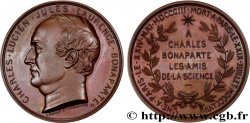
 产品介绍
产品介绍